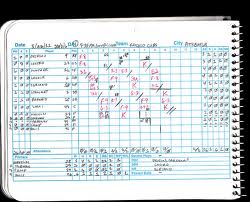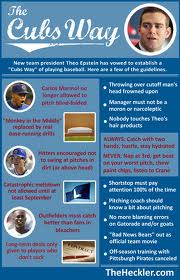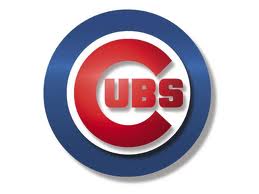 This last weekend I attended the Chicago Cubs Convention with my family. As we drifted from session to session, I couldn’t help but see all sorts of blog themes and things that non-profit organizations could learn from this major league franchise. Over the last few days I’ve shared a few of these observations and hopefully stimulated a few new ideas for you and your agency. In Tuesday’s post, we talked about stewardship. Yesterday, we discussed shared vision, values, and culture. Today, I am ending this series with a few words about statistics and predictive value.
This last weekend I attended the Chicago Cubs Convention with my family. As we drifted from session to session, I couldn’t help but see all sorts of blog themes and things that non-profit organizations could learn from this major league franchise. Over the last few days I’ve shared a few of these observations and hopefully stimulated a few new ideas for you and your agency. In Tuesday’s post, we talked about stewardship. Yesterday, we discussed shared vision, values, and culture. Today, I am ending this series with a few words about statistics and predictive value.
On Sunday morning, the last session of the entire convention was titled “Stats Sunday,” and the session description read as follows:
“You know what a pitcher’s ERA means and how to calculate a hitter’s batting average, but do you know what WAR stands for or how to find someone’s OPS? Baseball is full of new-age statistics. Jim Deshaies, Len Kasper and WGN’s Bob Vorwald will help break it down for us in this special offseason edition of “Stats Sunday.”
Essentially, this session was all about the things you learned about baseball scouting in the Oscar award nominated movie and best-selling book “Moneyball.”
During the hour-long session on new baseball stats (e.g. BABIP, OPS, OPS+, UZR, WAR, WHIP, etc), we talked about at least 10 new statistics that help baseball scouts determine one simple question: “Will this ball player be a good addition to our team and help win more games?”
As I am apt to do, my mind started wandering during this session, and I found myself wishing that non-profits would someday develop a set of predictive statistics to improve the art of board development.
I have sat in countless board development and nominating committee meetings, and they all feel like that scene in Moneyball where Brad Pitt is talking to his “old-school baseball scouts” about free agents and they start sharing anecdotal evidence about girlfriends and physical attributes. If you don’t know what I’ve talking about, you might want to check out this YouTube movie trailer that contains a portion of that scene in it.
[youtube=http://www.youtube.com/watch?v=kFXDnhvd1WQ]
You know what I mean . . . what do the discussions sound like around your board development table? Here are some of the things I keep hearing:
- Are they too busy?
- Do they serve on another board?
- Will they say ‘YES’ if asked?
- Who is the best person we should send to ask?
- Do they have money? Do they donate to us or others?
Too many agencies are essentially asking: a) do they have a pulse? b) is their wallet thick? and c) will they agree to do it?
 I dare to dream about the day when board volunteers have their own “baseball-type card” with statistics on the back that measure a board member on the following concepts:
I dare to dream about the day when board volunteers have their own “baseball-type card” with statistics on the back that measure a board member on the following concepts:
- How active and engaged is this person in your mission?
- How effective is this person at securing resources for your cause?
- How many people in this person’s network have been exposed to your agency because of this person? How many became volunteers? How many turned into donors?
As the days have passed since attending this session, I now realize that smart non-profit thought leaders are working on projects like this. Of course, the board development metrics out there aren’t as fancy as what baseball scouts use, but here are a few interesting websites and resources that you may want to check out if you are thirsty for board development change and want to shake up your board development committee:
 Do a little daydreaming with me today. What would the back of a non-profit board volunteer’s baseball card look like? What would you like to measure? What type of predictive statistics do you wish existed that could be used in a board development committee meeting to help evaluate your volunteer prospect list?
Do a little daydreaming with me today. What would the back of a non-profit board volunteer’s baseball card look like? What would you like to measure? What type of predictive statistics do you wish existed that could be used in a board development committee meeting to help evaluate your volunteer prospect list?
Come on . . . take a few minutes and do some dreaming. Who knows where it might led for you and your organization. Many years ago someone just like you in Major League Baseball did the same thing and it transformed an entire industry. Uh-Huh . . . you could very well be the next big non-profit thought leader. Please scroll down and share some of your amazing thoughts, ideas and questions in the comment section below. You don’t need to do this alone. 😉
Here’s to your health!
Erik Anderson
Founder & President, The Healthy Non-Profit LLC
www.thehealthynonprofit.com
erik@thehealthynonprofit.com
http://twitter.com/#!/eanderson847
http://www.facebook.com/eanderson847
http://www.linkedin.com/in/erikanderson847








